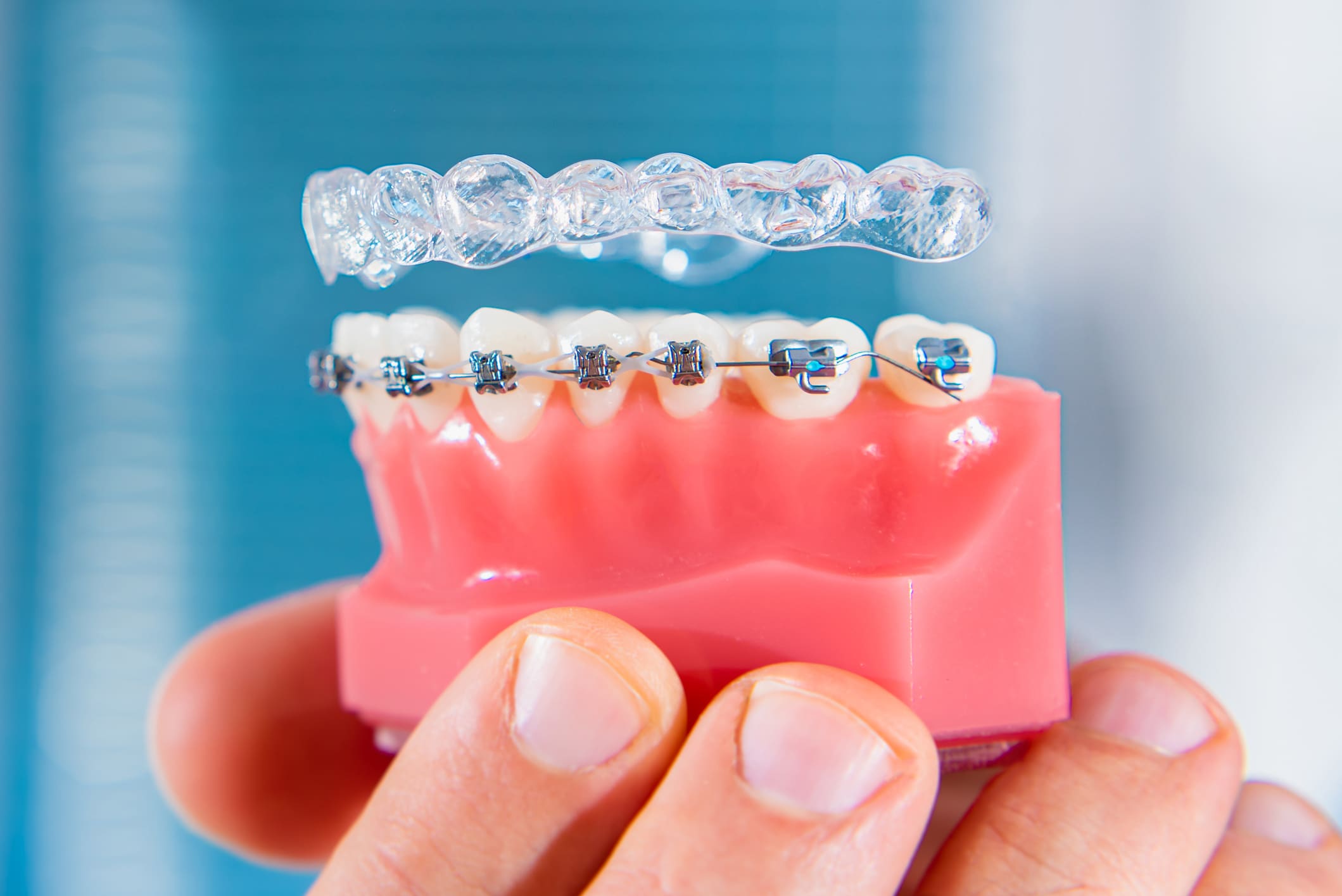Introduction
In the world of orthodontics, the debate between Invisalign and braces is a hot topic. With both options offering unique advantages and disadvantages, it can take time to determine which one is the best fit for your needs. Beaches Dental Mona Vale is here to help you through this decision-making process. In this helpful article, we’ll explore the differences between Invisalign and braces, their pros and cons, and various factors to consider when choosing the best orthodontic treatment for your unique situation.
What are Invisalign and Braces?
Invisalign
Invisalign is an innovative orthodontic treatment that uses clear, removable aligners to gradually shift teeth into their desired position. The aligners are custom-made from a patented, medical-grade thermoplastic material called SmartTrack and are virtually invisible when worn.
Braces
Braces, on the other hand, consist of metal or ceramic brackets bonded to the teeth, connected by an archwire, and tightened periodically to apply pressure on the teeth, gradually moving them into the desired position.
How do Invisalign and Braces work?
Invisalign
Invisalign works by using a series of custom-made, clear plastic aligners that fit snugly over your teeth. Each set of aligners is worn for approximately 1-2 weeks before moving on to the next set, which is slightly adjusted to continue the gradual movement of your teeth. Invisalign aligners are removed while eating, drinking, and for oral hygiene.
Braces
Braces use brackets and wires to apply continuous pressure to the teeth, gradually moving them into their desired position. The brackets are bonded to the teeth, and the archwire runs through them, creating the necessary force for tooth movement. The wire is adjusted periodically during orthodontic appointments to continue the process.
Pros and Cons of Invisalign and Braces
Invisalign
Pros
- Nearly invisible, making them aesthetically pleasing.
- Removable, allowing for easier oral hygiene and flexibility in your daily routine.
- Comfortable, as they don’t have wires or brackets that can irritate the mouth.
- Fewer dietary restrictions, as you can remove the aligners while eating.
Cons
- Requires discipline to wear aligners for at least 20-22 hours per day.
- Not suitable for all dental issues, especially complex cases.
- Generally more expensive than traditional braces.
- Requires more frequent dental appointments for aligner adjustments.
Braces
Pros
- Suitable for a wide range of dental issues, including complex cases.
- Non-removable, which means consistent treatment without patient compliance concerns.
- More affordable compared to Invisalign.
- Can be customised with coloured bands for a unique appearance.
Cons
- Visible, which may be a concern for those conscious of their appearance.
- Non-removable, which can make oral hygiene more challenging.
- Potential for discomfort due to wires and brackets.
- Dietary restrictions, as certain foods can damage the braces.
Factors to Consider When Choosing Between Invisalign and Braces
Invisalign vs Braces: Effectiveness
While Invisalign can be an effective treatment for mild to moderate orthodontic issues, braces are often more suitable for complex cases or severe misalignments. Both treatments can produce similar results, but the effectiveness of Invisalign largely depends on the patient’s compliance with wearing the aligners for the required time each day.
Invisalign vs Braces: Aesthetics
Aesthetically, Invisalign has a clear advantage over braces due to its virtually invisible aligners. For those who are concerned about their appearance during treatment, Invisalign can provide a more discreet option. Braces, especially metal ones, are more noticeable, but ceramic braces can offer a less visible alternative.
Invisalign vs Braces: Comfort
In terms of comfort, Invisalign is often considered more comfortable than braces. Aligners do not have wires or brackets that can irritate the cheeks and lips. Braces, on the other hand, can cause discomfort and irritation, especially after adjustments.
Invisalign vs Braces: Oral Hygiene
Oral hygiene is easier to maintain with Invisalign, as the aligners can be removed for brushing and flossing. Braces can make it more difficult to clean your teeth effectively, which can increase the risk of plaque buildup, tooth decay, and gum disease.
Invisalign vs Braces: Treatment Time
The treatment time for Invisalign and braces can vary depending on the complexity of the case. In general, braces may require a shorter treatment time for complex cases, as they provide continuous pressure on the teeth. However, for mild to moderate cases, certain Invisalign treatments can be faster.
Invisalign vs Braces: Cost
Invisalign treatment is typically more expensive than braces due to the custom-made aligners and the need for more frequent dental appointments. However, the cost difference may be balanced for some patients, considering the advantages Invisalign offers in terms of aesthetics and comfort.
Invisalign vs Braces: Dental Issues They Can Correct
Invisalign is suitable for correcting mild to moderate orthodontic issues, such as:
- Crowding
- Spacing
- Overbite
- Underbite
- Crossbite
Braces, on the other hand, can effectively treat a wider range of issues, including severe malocclusions and complex cases.
Invisalign vs Braces: Ideal Candidates
Ideal candidates for Invisalign include patients with mild to moderate orthodontic issues who prioritise aesthetics and comfort. Invisalign is also suitable for those who are disciplined enough to wear the aligners consistently for the required duration each day.
Braces are more suitable for patients with complex dental issues or severe misalignments. They’re also ideal for those who prefer a more affordable treatment or who may struggle with the discipline required for Invisalign.
Consultation with a Dentist at Beaches Dental Mona Vale
Ultimately, the best way to determine the most suitable orthodontic treatment for your unique situation is to consult with a dentist at Beaches Dental Mona Vale. Our experienced team will assess your dental needs, discuss your preferences and concerns, and help recommend the most appropriate treatment plan to help you achieve a beautiful, healthy smile.
Conclusion
Choosing between Invisalign and braces can be challenging, as both options have their advantages and disadvantages. Factors such as the severity of your dental issues, aesthetics, comfort, oral hygiene habits, treatment time, cost, and patient compliance should be considered when making a decision. Consulting with a dentist at Beaches Dental Mona Vale will help you make an informed decision and ensure you receive the best possible orthodontic treatment for your unique needs.

